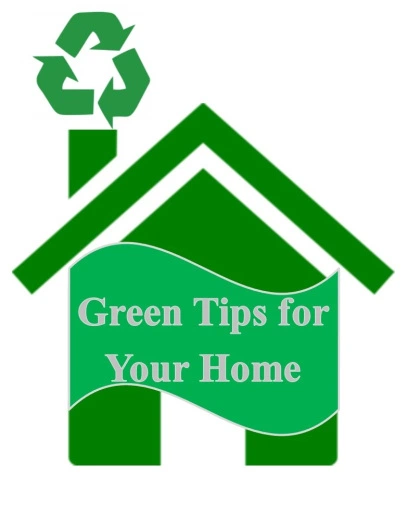There are lots of actions we can do in our homes to play our part in reducing landfill waste, cleaning the air, and preserving the natural landscape. Being environmentally friendly is also good economics in our home, budget and with the Earth. Green energy efficient homes leave smaller carbon footprints on the Earth and on the environment. Having a green home extends beyond the walls of buildings and include your yard and neighborhood too!
Here are some green home ideas you may want to consider:
Energy Efficient Appliances – Are designed to utilize minimum energy to complete the required task. They use renewable sources of energy such as solar energy and water. These appliances are capable of maximizing small amount of energy into the required one to complete a task. An example of energy efficient appliances is the energy saver bulbs, booster water heaters, and solar water heaters.
Smart Thermostat– Smart thermostats do more than automate a fixed heating and cooling climate control schedule. These app-enabled smart home devices make it possible to adjust your thermostat from your smartphone whether you’re on the couch, at the grocery store or on vacation.
Reclaimed Wood Flooring -Reclaimed wood comes from sources like old warehouses, boxcars, military structures, underground piers, dismantled houses, and even logs pulled from the bottoms of rivers. This type of wood flooring gives your home a classic, time-honored look.
Bamboo Flooring– Bamboo is replacing wood for many consumers who want both the beauty and the durability of wood without the potential environmental impacts that come from harvesting forests. The plant fiber is naturally anti-bacterial, water-resistant and tough. Plus, bamboo is so fast-growing, it won’t diminish hardwood forests that have taken decades to mature.
Low or Zero Voc Paint – Paints labeled “low-VOC” should contain fewer than 50 grams per liter of volatile compounds, if they meet the Green Seal standards. Since there is no one regulatory standard, the low-VOC designation means different things depending on which body is certifying it, but 50 grams is the common bar for architectural flat paints.
Non-Toxic Carpet-Carpets are one of the largest contributors to toxin exposure in your home. New carpets can contain several known human carcinogens, including formaldehyde, ethylbenzene, acetone, toluene, and styrene. When researching carpets for your home, be sure to look for the Green Label Plus program certification. This certification ensures carpets and adhesives meet high standards of indoor air quality.
Energy Efficient Light Bulbs – The most popular light bulbs available are halogen incandescents, compact fluorescent lamps (CFLs), and light-emitting diodes (LEDs). During their lifetime they save you money, because they use less energy.
Faucet Aerators– Are great for saving water, improving water pressure, better filtration and lowering your water bill. Faucet aerators come in two varieties: one compatible with shower heads and one intended for the standard faucets in your kitchen and bathrooms.
Rain Barrels– These barrels capture water from a roof and hold it for later use such as on lawns, gardens or indoor plants. Collecting roof runoff in rain barrels reduces the amount of water that flows from your property. It’s a great way to conserve water and it’s free water for use in your landscape.
Native Yard Plants – They provide shelter and food for wildlife and support pollinators. Native plants attract a variety of birds, butterflies, and other wildlife by providing diverse habitats and food sources. Native plants also promote biodiversity and stewardship of our natural heritage.
Solar Panels – Solar panels are a great way to offset energy costs, reduce the environmental impact of your home and provide a host of other benefits, such as supporting local businesses and contributing to energy independence.